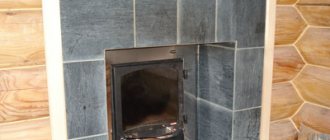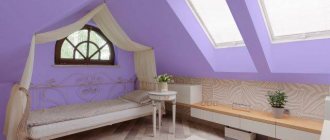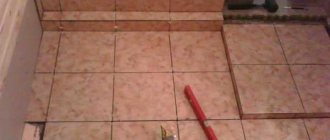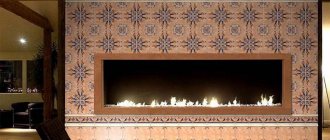Fireproof sheet materials for stoves and fireplaces
For the arrangement of heating structures, fireproof sheet materials for fireplaces and stoves are needed, since combustion devices heat up to high temperatures during operation.
Only then are they able to transfer heat to the surrounding space. At the same time, surfaces are heated, especially walls that are located closest to the stove or fireplace. And to avoid fire, screens and cladding are also made from such composites, which should also have an aesthetic appearance.
Fire-resistant sheet materials for stove and fireplace protective screens
Protective screens made of steel sheets are mostly used for metal combustion products to insulate their side walls. They are installed at a distance of up to 5 cm from the walls of the heating device and reduce thermal radiation.
Screens can be side or front. With their help, the temperature on the outer surfaces of combustion systems is reduced to +100 °C, which improves fire safety. Installation of convenient protective screens is simple and is carried out by attaching them to the floor using special legs.
Side protective screen [ads-mob-1][ads-pc-1]
Classification
The product is divided into several brands.
- KAON-1 is used as a heat-insulating material for surfaces that reach +500°C.
- KAON-2. It is used as a sealant in various types of communications. Also for the manufacture of device parts subject to pressure up to 0.6 MPa. Operating temperature when used in a gas environment up to +500°C. When operating the material in an alkaline environment, the maximum permissible operating temperature should not exceed +200°C, in an inorganic acid environment - +120°C, in organic environments up to +400°C.
- KAP. Spacer asbestos cardboard used for compaction can withstand pressure up to 7 MPa.
Each of the above brands is produced in sheet . The classification also depends on the thickness of the sheet , its other dimensions (length and width), and the state standard.
Reflective trim
It is effective to use cladding consisting of fire-resistant sheets in combination with non-flammable thermal insulation composites.
Fire-resistant sheet materials are mounted on top of thermal insulation; it is preferable to use stainless steel sheets for such cladding, since galvanized steel sheets can release toxic substances into the air when heated. To make the protection more effective, the steel sheet is polished to a mirror finish: this way, heat rays are reflected better from the metal, and the wall heats up even less.
Wall cladding with mineralite slabs
There is a whole range of OLM for cladding:
- basalt cardboard, made of basalt fiber, provides good heat and sound insulation;
- asbestos cardboard is durable and strong;
- mineralite; protective screens for stoves and fireplaces are also made from its sheets.
Make the right choice
It is necessary to choose the right asbestos sheets to get all their benefits. Unfortunately, the modern building materials is replete with fakes. They attract people with low cost, but the quality often leaves much to be desired. Such products in any category often show low actual technical characteristics that clearly do not correspond to the declared ones. And when it comes to asbestos cardboard , counterfeit material can also be hazardous to health. That is why it is necessary to pay attention to the manufacturer of the product.
In our online store you will find products from the most reputable manufacturers. We strive to provide only the best quality to our customers. Before sending materials, our employees must check the integrity of the packaging and the presence of defects. If a defect is detected, the product is sent to the manufacturer, and only the highest quality materials . If you are not satisfied with the quality of the received asbestos-cement sheets or flat slate , you will have the opportunity to return the product. However, in our practice there were no such cases!
Cladding with cladding
Facing the mineralite surface with soapstone tiles.
For this, the following fire-resistant sheet materials are taken:
- fire-resistant plasterboard - it is made with the addition of fiberglass and does not deform under the influence of thermal radiation;
- mineralite, it is also characterized by high moisture resistance and the ability not to collapse under the influence of elevated temperatures;
- The glass-magnesium sheet is made of fiberglass (in which the magnesium substance acts as a binder), it is able to withstand high temperatures.
Heat-resistant screens for sauna stoves. Part 2
Video description
How to protect the walls of a steam room from overheating?
Insulating materials. Installation of such shields can be easily done by hand. This is ensured by special legs, which are provided by the manufacturer. They are securely fixed to the floor. The distance between the screen and the stove must be maintained - approximately 1.5 cm. Approximately the same distance should remain to the wall. Metal protective screens can reduce infrared radiation to 80-100 degrees.
The use of a metal protective screen for a bath room Source par-torg.com
Homemade brick screen
This design consists of two types of fencing:
- screen in the form of a casing. Brickwork is done on all sides of the stove, which ensures high reliability and prevents heat from escaping from all sides of the heating device;
- masonry screen on a nearby wall. In this case, a layer of brick is made directly in the place where the stove is as close as possible (the partition itself is covered). This option is a protective, specially equipped wall fragment.
For masonry, only fireclay bricks are used, and cement-sand mortar or clay mortar is used to fix it. The material is laid in half a brick (120 mm) or a quarter (60 mm). The first method is a priority, and the second is rational in case of a shortage of building materials. With quarter masonry, the distance to the wall is additionally maintained. Ideally, there should be a small gap between the shield and the partition.
Insulation of the back wall from the stove in a bathhouse using brickwork Source par-torg.com
When insulating the wall from the furnace using the chosen method, do not forget to follow the following rules:
- the lower part of the shield must be organized so that there are special holes in it. Ensuring ideal convection of the space between the screen and the wall;
- the height of the brick screen should be at least 20 cm higher than the height of the heating device; ideally, it should be raised to the ceiling. This will prevent hot air from contacting the wall at the top of the room;
- the minimum distance between the brick screen and the partition in the bathhouse should be 5-15 cm. If you make it smaller, then there can be no question of any protective properties;
- The gap between the stove and the protective screen is also important. They cannot be lined up close to each other. The smallest distance that must be maintained is 5-15 cm.
It is recommended to choose brickwork only if free space allows, since often a partition that is too thick can cause inconvenience in the operation of a paired room.
Special non-combustible wall cladding
Protecting the walls from the stove in the bathhouse can be done with various types of non-combustible materials. They are able to maintain the aesthetic appearance of the room and reduce the risk of fire.
Non-combustible cladding for a bathhouse from contact between the stove and the wall Source m.123ru.net
There is reflective cladding, which is made of stainless steel or galvanized steel. Only the latter has the property of releasing toxic substances when heated. For these panels, non-combustible material is additionally used for thermal insulation. It is attached to the wall and then covered with a metal screen. And here it is necessary to maintain ventilation gaps between the insulation layers - at least 3 mm.
The heat-insulating raw material, which is an intermediate layer in protecting walls, can be:
- basalt cardboard is quite thin, retains heat well, does not burn;
- basalt wool is considered absolutely safe and does not burn;
- mineralite is a good insulator for walls in the form of slabs;
- asbestos cardboard is considered strong and durable, completely non-flammable.
Application of brickwork made of bricks with basalt cardboard Source par-torg.com
Wall cladding with sheet fire-resistant material
To ensure the fireproof condition of the room, you need to wisely select the material for covering the walls near which the heating structure is located.
And vermiculite panels are ranked among the most effective OLM. Moreover, such slabs are used to ensure fire safety in various premises, including enterprises in the nuclear and oil refining industries.
Among the advantages of fire-resistant vermiculite boards are:
Vermiculite boards
- environmental friendliness;
- fire resistance;
- thermal insulation;
- sound insulation;
- aesthetic appearance, which allows them to be used in prominent places.
Where are they used?
Vermiculite panels, due to their excellent performance qualities, can be used in many areas.
Scheme of thermal protection of a wall and fireplace lining with a vermiculite slab
- For thermal insulation of fireplaces and stoves.
- For fire protection of structures made of different materials.
- To ensure that various objects can withstand fire hazards.
- For guaranteed fire resistance of various indoor items, including stoves and fireplaces.
Vermiculite boards, as representatives of OLM, are installed simply and quickly and do not require professional training. Processing them on all sides of a stove or fireplace ensures protection of the room from the effects of fire and high temperatures, and therefore such fire-resistant sheet materials are optimal in solving the problem associated with the fire safety of the room.
All samples of fire-resistant sheet materials for stoves and fireplaces are modern, high-quality products. In addition to fire protection, they provide heating devices with resistance to various types of damage, including mechanical and chemical.
[ads-pc-2][ads-mob-2]
Do you need protection and requirements for furnace placement?
If the steam room rocks, it heats up to the highest possible temperatures, for example, the heating device itself can heat up to 300-400 degrees. At the same time, it gives off heat to the room, but most of it falls on nearby or even adjacent walls. Accordingly, in order to prevent charring of the partitions and their subsequent ignition, it is necessary to protect them.
Option to protect the furnace using fire-resistant plates Source pechivrn.ru
Only those walls in relation to which the stove is placed taking into account the following parameters do not need insulation:
- one-quarter brick masonry oven - 0.32 m;
- brick with metal sheet cladding - 0.7 m;
- furnace with no lining layer (internal masonry) - 1 m or more.
It is not easy to ensure such a distance, especially if the area of the steam room does not allow it. Therefore, at this stage they come to the conclusion that insulating the stove in the bathhouse is a necessary measure.
Fire safety measures and risks
When laying an asbestos-cement channel yourself, it is necessary to strictly follow fire safety rules, since the material gets very hot and there is a risk of fire:
- The installation of a chimney in the ceiling involves making a special penetration in the form of a hole in the ceiling 10 cm larger than the cross-section of the pipe. The resulting distance is filled with non-combustible material.
- You can initially build a “fluff” and fill the gaps with broken bricks and sand.
- To protect the roof from water leakage, the perimeter of the chimney structure must be sealed with a cement compound or a special bitumen mastic must be used. Sealing cracks with silicone is excluded.
Which insulation option is better to choose?
Among the listed options for protective structures, there are no better ones. Everyone chooses an option depending on the size of their wallet. It would be a good idea to stop at finishing the surface with tiles, after preliminary thermal insulation. But in most cases, users prefer metal screens.
Mandatory insulation of the chimney in the bath Source uokoshka.ru
When arranging a bathhouse in a private house, the last option is considered the fastest and most economical. If you follow the technology when performing protective masonry, even the most budget-friendly method will be effective.
Useful tips
When performing insulation work in a bathhouse to ensure the highest degree of safety from fire, it is recommended to consider the following tips:
- it is mandatory to insulate the floor, since it is also affected by high temperatures;
- the choice should fall only on high-quality materials for insulation (it is better to ignore those that are too cheap);
- Ideally, use two-layer thermal insulation to ensure the safety of the room.
Such simple manipulations will help reduce the possibility of ignition to zero.
What to do if the gap behind the stove is minimal
There are times when the wall and the stove are very close to each other. Then there can be no talk of thick protective screens. In this situation, the following technologies can be used:
- strengthening the partition by hanging metal screens;
- placement of slabs made of ceramic material;
- replacing all existing gaps with mineral wool;
- winding the chimney using a street reflector (the material is heat-resistant foil).
On a note! Remember that mineral wool does not react well to condensation. The insulating layer accumulates moisture, ceases to fulfill its tasks and deteriorates over time.











